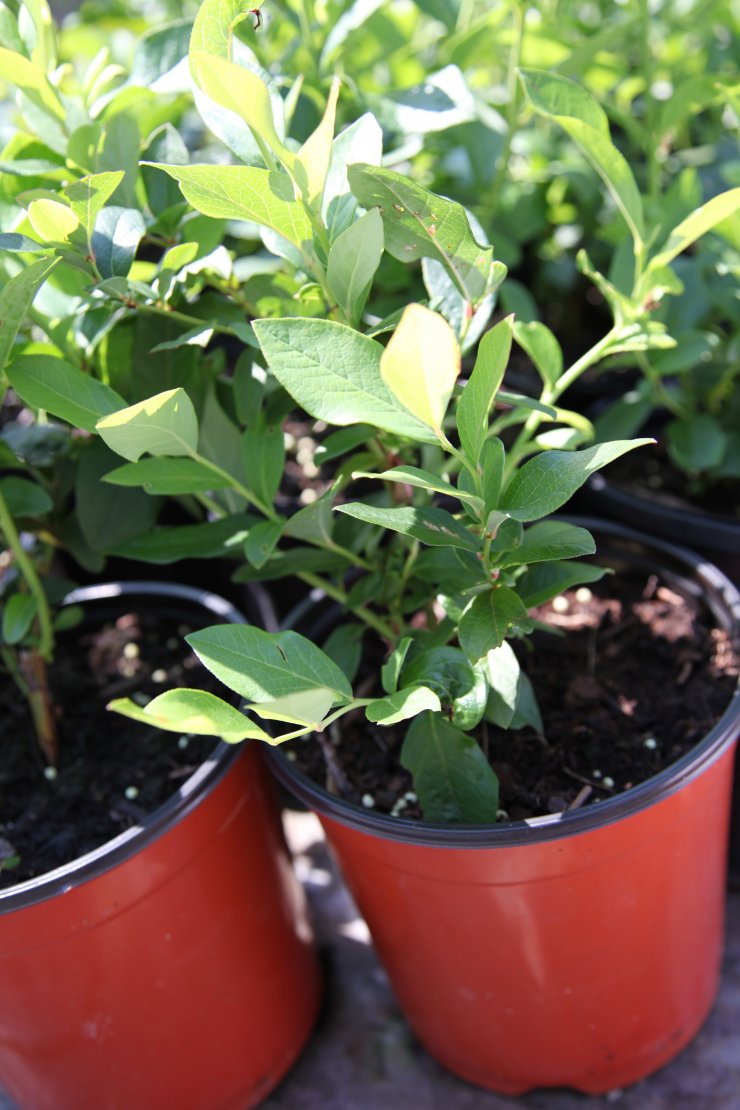
Young blueberry plants in pot
The first thing you should do is test your soil. You can do this yourself with a test kit, or take samples of your soil to your local garden center or county extension center and have them test it for you.
If the pH of your soil isn’t in the correct acidic range, you’ll have to amend it to get it to the right balance. If your soil is too “sweet,” too alkaline for example, then you’ll need to add powdered sulfur to bring down the pH. Talk with your garden center or extension center about the exact amount you’ll need for the area where you’ll plant your blueberries. Your amount will vary depending on the overall type of soil you have in your garden.
Once you’ve adjusted your soil, you’ll need to let it sit for anywhere between two months to six months to let that change absorb and really settle in. In general, you should do this no later than in the fall before a spring planting.
Preparing to Plant

Blueberry preparing to be planted
In the spring, order your plants from a certified nursery to ensure you’re getting healthy, disease-free plants. Nurseries usually sell 2-year-old plants. They’ll be a foot or two tall and will probably have one dominant cane.
As you dig your planting holes, be sure to include some organic matter. Your best choice is to mix a gallon of peat moss with the soil for each plant.
Space your plants 3 to 4 feet apart. If you have more than one cultivar (which you should for maximum yield), be sure to mix up your plants rather than relegating individual cultivars to their own rows or sections. You don’t have to arrange them in a regimental pattern if you’re just planting them for home use; lay them out for maximum impact.
After you’ve planted them, lay down a generous layer of leaf compost, sawdust, woodchips, or clean straw; this material will decay over time and add nutrients to the soil. Mulching your plants also helps them retain moisture and decreases the likelihood of weeds popping up. Add mulch each year, keeping a continuous layer several inches deep around your plants.
Once your plants are happily in the ground, remove any flower buds and give them a good drink of water. Blueberry plants like 1 to 1 1/2 inches of water a week during the growing season. So, if you don’t have rain in the forecast, make sure they don’t go thirsty.
Have you tested the pH level of the soil for your blueberries? Did you have to make any soil adjustments or amendments? Please tell us how you prepare the soil for your growing blueberries.


 Previous
Previous

